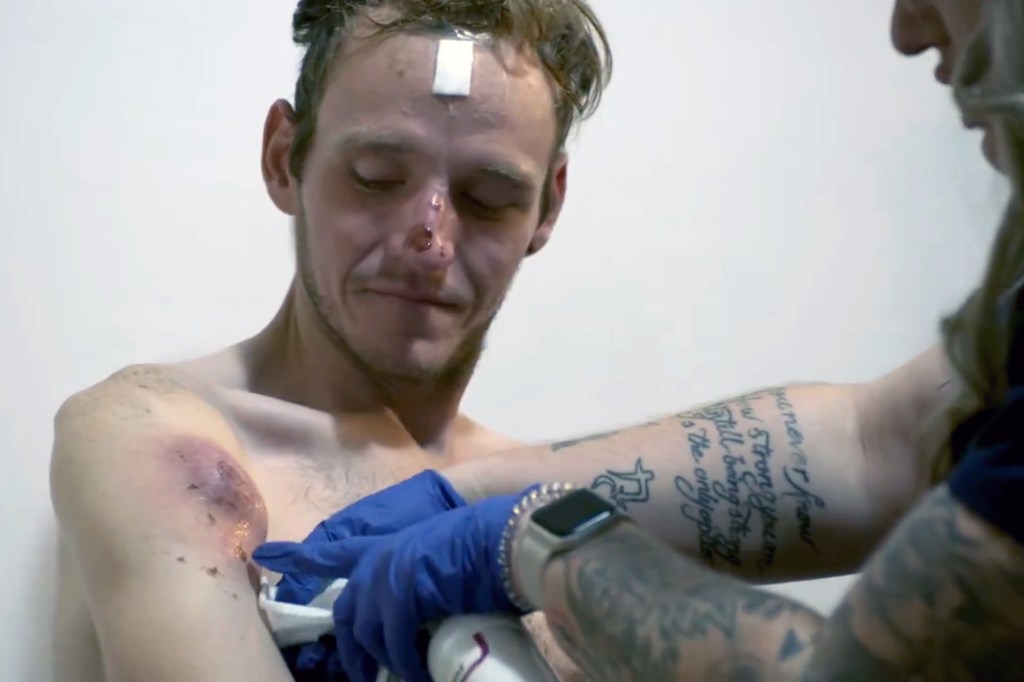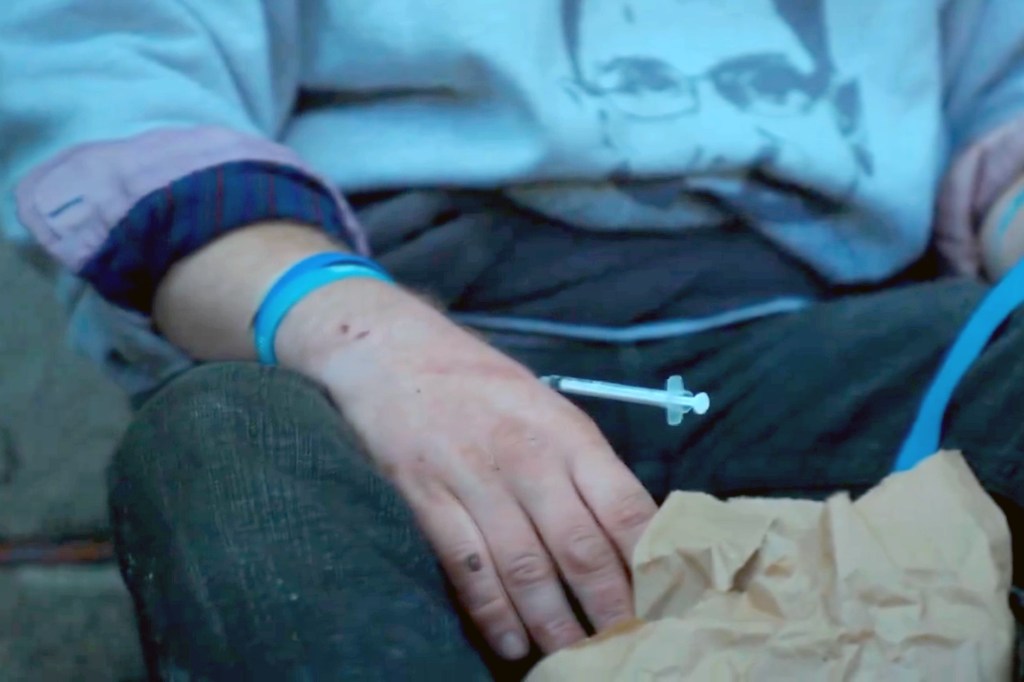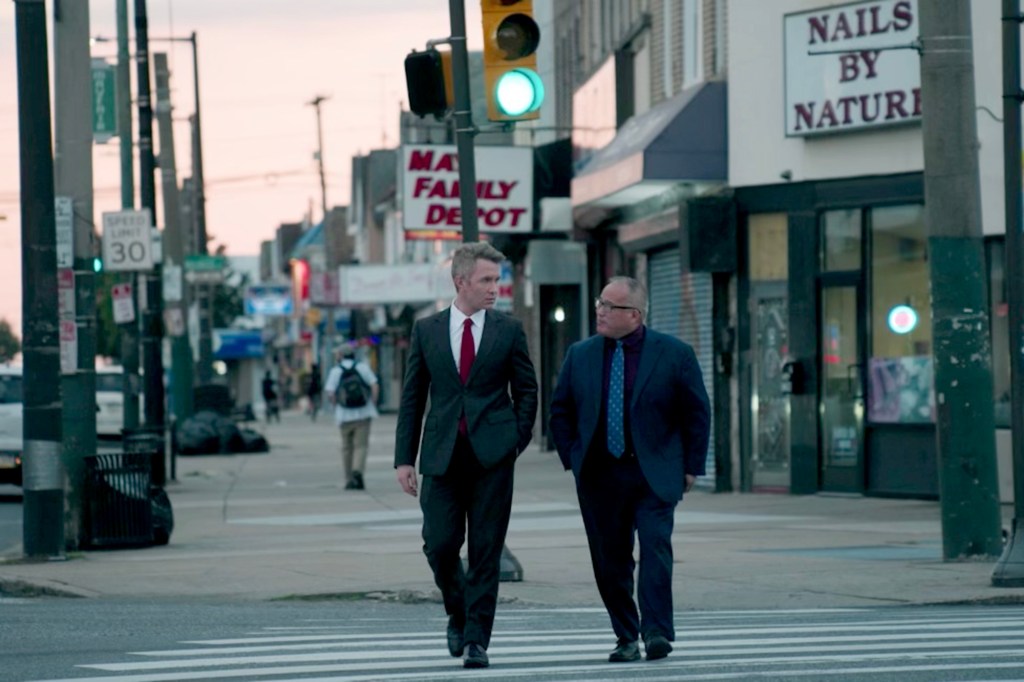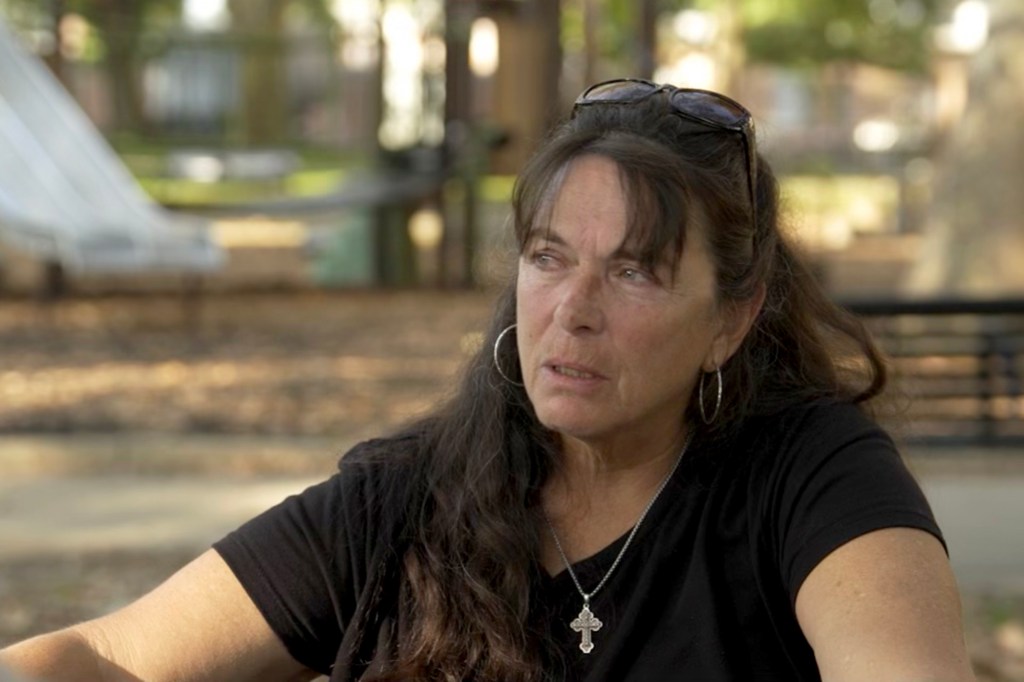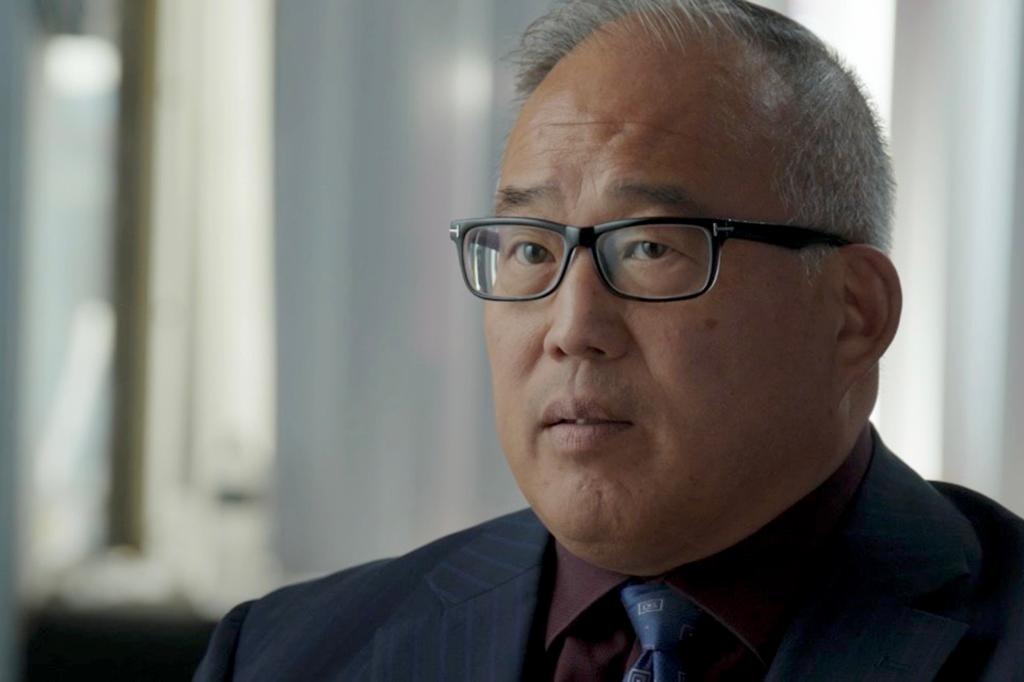City of Brotherly Love needs tough love — not ‘safe’ drug use — to free it from scourge of tranq
Last week I described how easy it is to get the most lethal drugs on the streets of New York.
And how “safe-use” sites had become magnets for dealers and addicts.
Such sites are fought over. Do they help addicts use safely? Or do they normalize lethal behavior?
I went to the streets of another East Coast city to find out.
The first time I went to Philadelphia, some 20 years ago, the city was a proud place. Today it is not only crime-ridden, but drug-ridden.
And in one area in particular it is absolutely swimming in drugs and the misery and the almost unfathomable misery they bring in their wake.
Over the last few years the Kensington Avenue area of Philly has become notorious across America.
It is not just the extremity of the scenes, but the fact that the area is condensed.
All the human misery that is more widely spread out in West Coast cities like San Francisco and Los Angeles here is tightly packed in. And beyond imagination.
Each time I have visited in the past year I’ve been not just appalled and sickened but deeply saddened by what I have seen.
Walking the streets of Kensington in the daytime is dangerous enough. In the nightime it is a no-go area which even hardened addicts avoid unless they are buying.
In the middle of the day you do not just see people shooting up everywhere.
You also see people passed out everywhere, rummaging in bags for their few belongings, or frozen like figures in a nightmare. Just one sign of the potency of the drugs now on sale here.
Walking to a clinic that tries to look after some of these users a young man shot up in front of me. He started staggering down the street in a kind of jerky dance.
Get opinions and commentary from our columnists
Subscribe to our daily Post Opinion newsletter!
Thanks for signing up!
Then his body gave out and he collapsed into a heap on the pavement. I went over to check if he was still breathing. A teenage schoolgirl walked past.
“He dead?” she asked nonchalantly to me. “I don’t think so” I told her. “They gotta sort this shit out” she said over her shoulder as she walked on.
One of the groups that is trying to sort this out is Savage Sisters. The group’s executive is a remarkable woman called Sarah Laurel.
A former addict, she set up Savage Sisters to care for the people of Kensington who are using.
The volunteers give out clean needles and the reviving drug Narcan, warm drinks and care.
Most importantly their volunteers tend to the wounds that addicts come in with. It’s not formal medical care but it is better than nothing.
I spent a morning with them, watching the people who were coming in. Some passed out as they were sitting beside me.
Others came with wounds that now seem to be mainly emanating from a drug even more potent and lethal than fentanyl.
“Xylazine,” also known as “tranq,” is the flesh-eating tranquillizer which has found its way into the drug supply in Philly. Its effects are visible in the frozen, statue-like position users can be seen in across the streets. But also in the appalling wounds which it causes in users.
At Savage Sisters I met one male addict called Paul who been using the drug for a couple of years. His body was covered in huge boils and open wounds.
His head and nose were covered in other wounds and bandages. Caused — he said — by knocking into things as he passes out.
Paul is now 29 and said he´s been shooting up since he was 21 — so about 8 years. He claimed never to have had health issues like this until the last two years.
“I used to go without any sort of abscess or cyst or anything” he said. “So it was when the tranq came in that that was when you got wounds for the first time?” I asked. “Right,” he said. “It was a combination of the tranq causing people to get more open wounds.”
About an hour after I had watched Paul having his wounds cleaned I saw him sitting on a doorstep down the road, a needle sticking out of one of his arms. We waved at each other.
As it happens, his wounds weren’t the worst I saw that day. Another user who dropped in while I was there had leg wounds worse than anything I have seen outside of a war-zone.
Indeed although the volunteers were doing what they could, his leg seemed to be suffering from necrosis and looked like it might have to be amputated before long.
Later I asked a retired local doctor about how this had developed. He said that not only had the problem been growing for years, and Philly become practically a laboratory for new strains and potencies of drugs, but that the official hospitals had a challenge with these patients.
When patients are brought in, having overdosed, they are often angry at being revived.
Among other things, they believe their “high” has been interrupted. Others get violent from withdrawal.
The city’s professionals found it ever-harder to cope with the volume of addicts being brought in.
And all the time new drugs were coming before them. In 2021 over a third of Philadelphia’s 1,237 recorded overdose deaths involved tranq.
This leaves volunteers like Sarah Laurel to try to cope as best they can.
“We have zero human studies on Xylazine and the effect on the human body” she told me. “So unfortunately, because the adulteration with Xylazine began in Philadelphia, Philly has been dealing with this crisis firsthand, on the ground. With no scientific data. No medical back-up. Nothing.”
People like Sarah argue for safe-supply. In the same way that getting alcohol in a bar is one way of making sure you don´t get moonshine, so — such activists say — providing safe-supply of heroin and other drugs will mean drugs can be tested for lethal toxins.
But isn’t it all lethal? Isn’t even the idea of “safe” heroin an oxymoron?
Republican Mayoral candidate David Oh certainly thinks so. To people who say there isn’t a policing way out of this problem he has a very straightforward answer: it hasn’t been tried.
Just as I saw police sitting a few yards from someone shooting up fentanyl on the streets of Washington Heights, so on Kensington Avenue the police and ambulances are sometimes there.
But what authorities do exist just seem to sit by as this scene of American apocalypse plays out in front of them.
The human cost of this is of course incalculable.
Most countries would regard more than 100,000 deaths a year from anything as being a subject for concern. But not, it seems, in the US in 2024.
Perhaps a better way of thinking of it is to remember that this is not just 100,000 human tragedies, but hundreds of thousands — if not millions — more. Because every user creates a wave of tragedy.
In Philly I spent a day searching the streets with a woman called Esther Ann (a middle school lunch lady originally from New Jersey).
We connected through one of the many Facebook groups in which relatives of people who have gone missing on Kensington Avenue try to get information on their loved ones.
Esther Ann was searching for the mother of her granddaughter. Talitha — or Tal — has been missing for a couple of years now.
Esther spends part of her days desperately trying to find information online that might connect the family again.
We walked the streets, with Esther showing a photo of her relative to various passersby, users and others. She held up a photo to passing cars. Some shrugged and said they didn’t recognize her. Others had a bleary recollection of seeing Tal.
Eventually we found one addict who said they’d seen her come to this bit of Philadelphia from another part of the area.
But the woman said Tal came here but didn’t like staying in the area after dark. Like others she went elsewhere to use.
As Esther wept for her relative she reflected on her feelings on not seeing her.
“Part of me felt relieved,” she said at the end of the day, crying. “But I wanted to find her. I didn’t know what kind of condition she would be in. I hope to see her again. And I hope my granddaughter gets to see her again.”
This is the world between the law and “safe supply.” A city where people die or almost die in the street in front of children all day and night long.
A place where anyone can come and get addicted to substances whose strength is such that they will develop wounds that will reek and explode.
But Philadelphia has got used to it. As the rest of the country has got used to it. All in different ways, and to different extremes.
Still, if you want to see how the bottom falls out of a city and the abnormal becomes normal, make a trip to Philly someday.
And see what any other city in America could become. If it makes the wrong choices.





